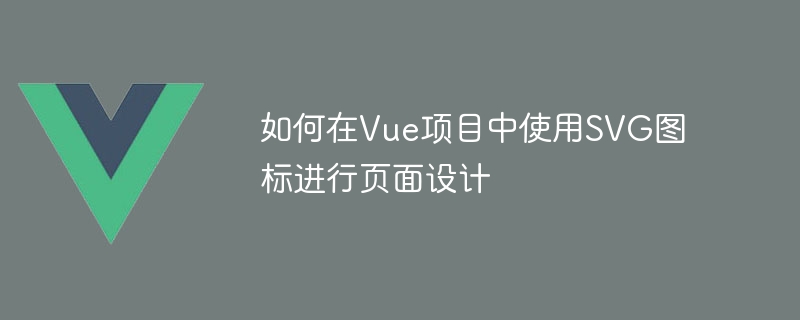

How to use SVG icons for page design in Vue projects
In modern web development, vector icons (SVG) are becoming more and more popular because they can Seamlessly scale without distortion. For Vue projects, using SVG icons can bring greater flexibility and beauty to page design. This article will introduce how to use SVG icons in Vue projects and give specific code examples.
Step 1: Select SVG icon library
To use SVG icons in a Vue project, you first need to select a suitable SVG icon library. Currently, the more commonly used SVG icon libraries include Font Awesome, Material Design Icons, Feather Icons, etc. These icon libraries provide a large number of excellent SVG icon resources for us to use.
Step 2: Install the SVG icon library
Use npm to install the selected SVG icon library. For example, execute the following command to install Font Awesome:
npm install @fortawesome/fontawesome-svg-core npm install @fortawesome/vue-fontawesome npm install @fortawesome/free-solid-svg-icons
Step 3: Register SVG Icon component
To use SVG icons in a Vue project, you need to register the SVG icon library as a global component. Add the following code to the main.js file:
import { FontAwesomeIcon } from '@fortawesome/vue-fontawesome'
import { library } from '@fortawesome/fontawesome-svg-core'
import { faUser, faHeart } from '@fortawesome/free-solid-svg-icons'
library.add(faUser, faHeart)
Vue.component('font-awesome-icon', FontAwesomeIcon) In the above code, we first introduced the FontAwesomeIcon component, library and the SVG icon that needs to be used, and then Icon added to library. Finally, use the Vue.component method to register FontAwesomeIcon as a global component.
Step 4: Use SVG icons
To use SVG icons in Vue components, you only need to use the font-awesome-icon element in the template and pass The icon attribute specifies the icon to use. For example:
<font-awesome-icon icon="user" /> <font-awesome-icon icon="heart" />
In the above code, we use the font-awesome-icon element and specify the icon attributes as user and ## respectively. #heart, that is, using the two registered SVG icons faUser and faHeart.
<template>
<div>
<font-awesome-icon :icon="currentIcon" />
</div>
</template>
<script>
export default {
data () {
return {
currentIcon: 'user'
}
}
}
</script>currentIcon variable to dynamically specify the SVG icon to be used, and the user icon will be displayed when the page is loaded.
The above is the detailed content of How to use SVG icons for page design in Vue projects. For more information, please follow other related articles on the PHP Chinese website!




